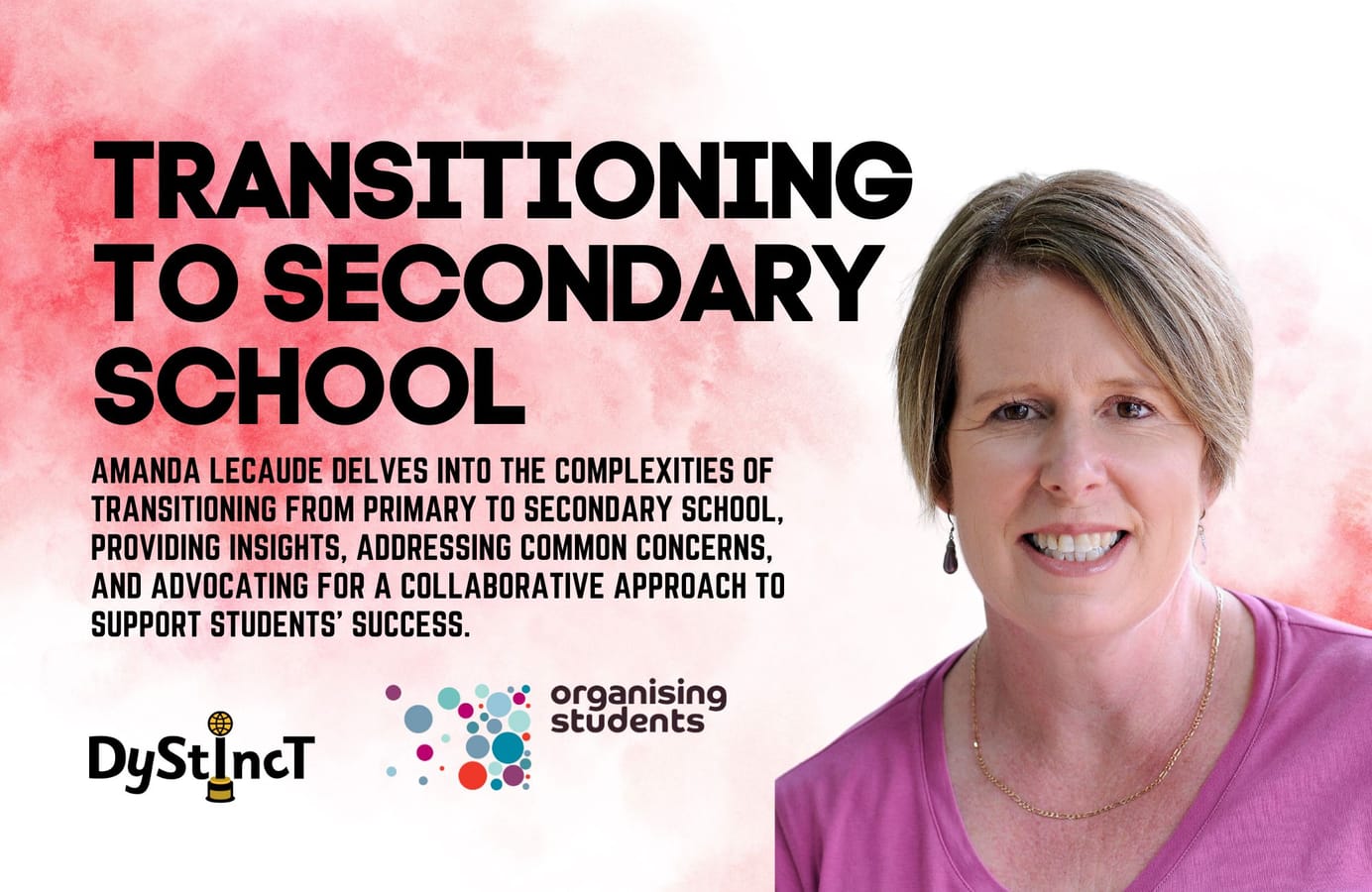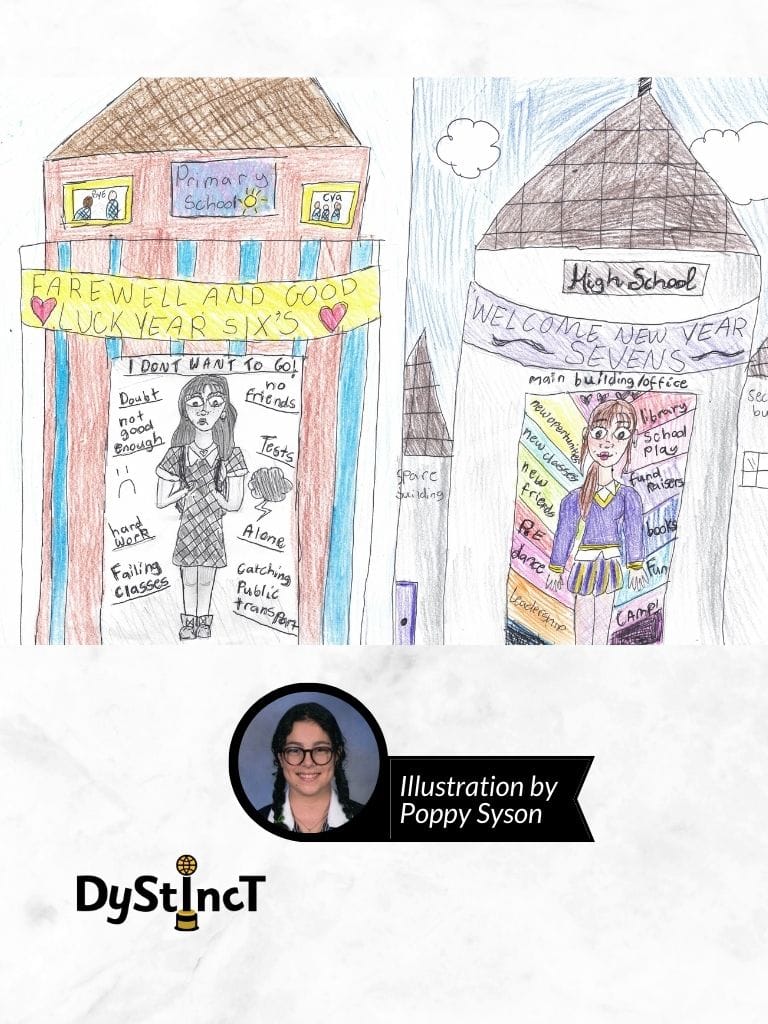
Issue 21: Transitioning to Secondary School | Amanda Lecaude
Amanda Lecaude delves into the complexities of transitioning from primary to secondary school, providing insights, addressing common concerns, and advocating for a collaborative approach to support students' success.
Many students begin worrying about secondary school sometime during their final year at primary or elementary school (what you call it will depend upon where you live in the world).
Transitioning to secondary school is a big leap for students and is one of several big experiences a child will go through in their lives. It is a time of change, development, and growth in many ways, and they will have lots of thoughts and feelings about it. Students’ concerns are often mirrored in the family, with emotions swinging from excited to unsettled, particularly when a family is going through the transition for the first time. The transition process often evokes mixed feelings of stress and anxiety, enthusiasm, and nervousness. Usually, these feelings are associated with uncertainty. Students worry about what the transition involves and can fear change – a new environment, new routines and new expectations. The fear of the unknown can be very powerful, and removing as many barriers as possible will allow students to embrace the new adventure and find success.
In most, though not all, situations, transition usually means that students move to a completely new school. Even if students do continue in the same school, it can require transitioning to a different campus and significant changes in rules or processes, too.
Most secondary schools in Australia (I am not entirely sure in other parts of the world, though I assume it is similar) have a transition or ‘orientation’ program in place. Naturally, some are more in-depth than others. During these programs and then when students start the new school year, the schools often provide further transition programs or activities to enhance students’ familiarity with the school, the process, and expectations.
It is important to remember that, as parents, it is best not to make assumptions about your child’s expectations. We have a plethora of our own memories, which can sometimes complicate what we expect our children to experience. We must remember that they have never been in this situation before. For some children, it really might feel like walking into an abyss. Others will be full of confidence.
It can also be a big change for parents as no doubt you have built relationships with your child’s primary/elementary school, teachers, other parents and so on. Your relationship with the primary school might be coming to an end and you will have a different relationship with your child’s secondary school. It is okay for parents to have mixed feelings about this too.
Remember, your feelings are potentially sending messages to your child about this journey. Any visible anxiety you may have will not assist them. Our children really do take their lead and energy from us as parents, even though it might not always seem so.
We have a plethora of our own memories, which can sometimes complicate what we expect our children to experience.

Common concerns or worries for children
Common concerns or worries for children
There are many different concerns with the transition journey. However, in my experience, the following tend to be the most common:
[1] Ability to make friends easily?
Reassurance is needed that they are not the only ones, and it is useful to remind them that they actually already know how to make friends and can do it again.
[2] Worried about the amount of homework they will get.
They are concerned that there will be a dramatic increase and that it will take up all their spare time. The other concern they have is that it will be too hard for them as well. They need to know that homework is going to increase and that it is good to begin developing a good homework routine early that will then allow them to have time for the other activities that are important to them. Organisation and good time management are key!
[3] Going from being the oldest and biggest to the youngest and for some the smallest as well.
The children are currently used to being the bigger ones at primary school usually in both age and size. So, thinking about going to secondary school this will be flipped on its head again.
[4] Not knowing their way around and scared of getting lost easily.
Students are often concerned about not knowing where things are. The size of the school will probably be double or triple in both size and number of students to what they are currently used to. Many schools will give the students maps they can familiarise themselves with, too.
[5] Concerns about using lockers and forgetting combination codes.
Whilst many students are excited about having the opportunity to have their own lockers, they are often a little concerned at the same time. In primary school they are often used to having access to both their tubs and school bags inside their classrooms so having lockers is quite a change.
[6] Getting detention or being bullied.
These are both common worries for students and get raised time and time again. I usually tell students that if they continue to do the right things, then detention won’t be an issue they need to actually worry about. When it comes to bullying, I highlight that if they feel this is happening, they need to speak to someone about it as it is not okay.
This post is for paying subscribers only
SubscribeAlready have an account? Log in


